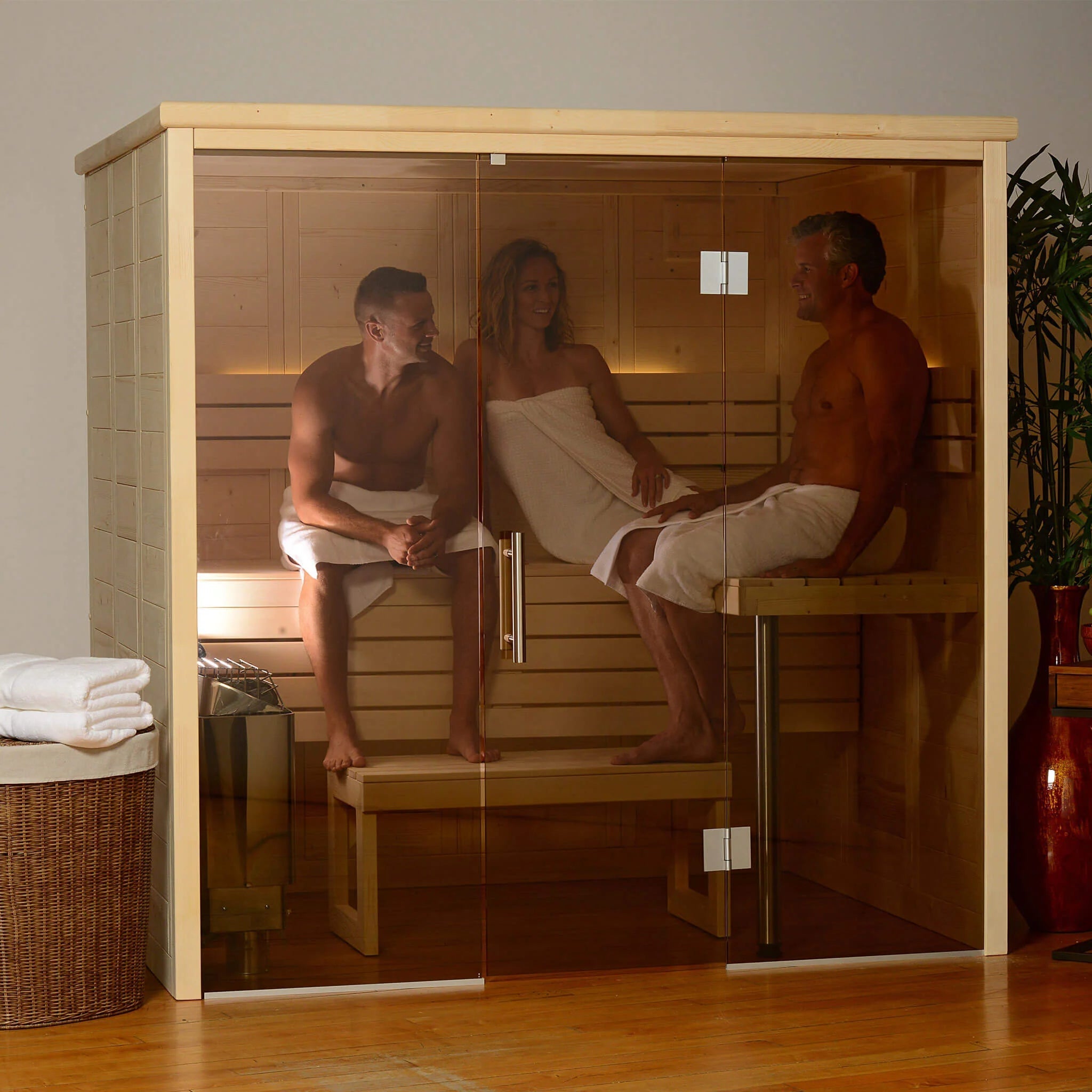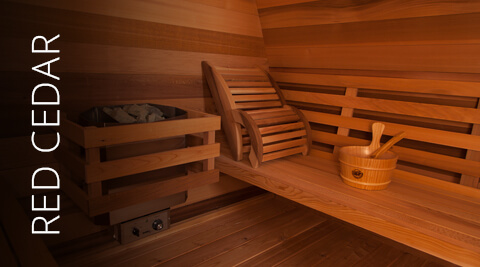Unknown Facts About Traditional Sauna
Unknown Facts About Traditional Sauna
Blog Article
Not known Facts About Traditional Sauna
Table of ContentsHow Traditional Sauna can Save You Time, Stress, and Money.Examine This Report about Traditional SaunaExamine This Report on Traditional SaunaTraditional Sauna for Dummies
A lot of the weight shed in a sauna is water loss and is re-gained upon rehydrating. Without an uncertainty sauna can be a vital component of a healthy and balanced weight loss program. To consider the distinctions in between traditional and IR saunas, I will separate these right into proven, academic, and made differences.Hence, the best factor in the saunawhich is at the ceiling straight over the sauna heateris usually between 185 and 190 F. Traditional Sauna. Claims that a typical sauna goes beyond 200 F is just not true and not applicable for electric saunas marketed in the United States. The temperature for a far-infrared sauna is usually established between 120 and 140 F; nonetheless, unlike the typical sauna, the objective in and IR space is not to accomplish a heat
As a result of this, the temperature level distinction is nearly unnecessary, considering that profuse sweating leads to both sauna types, but the technique of heating the body is various. In an IR sauna the bather will certainly feel warm and will sweat a lot, but at a lot lower temperature levels. Therefore, if the objective is to invest longer periods of time in the sauna, the IR sauna is an excellent option.

Some Known Details About Traditional Sauna
When the heat is achieved, the elements cycle on and off to maintain the high temperature. A lot of conventional sauna customers take pleasure in putting water over the rocks to develop steam to elevate sauna moisture levels. The benefits of putting water over the rocks consist of: making the area more comfy, moistening the nasal passages, and enabling the use of aromatherapy by mixing necessary oils with the water.
In a far-infrared sauna, the warm waves permeate the body to efficiently heat the body and raise the body core temperature level. To accomplish this increased temperature level, Far-infrared emitters develop infrared power which is close to the very same wavelength as that which the body normally emitsoften described as the "Important Variety" of 7 to 14 microns), so the energy is well received by the body.
When the power gets in the body, it creates the body temperature to raise and eventually leads to sweat. In an infrared sauna it is necessary for the emitters/heaters to continue to be on Web Site virtually constantly. Given that there is no mass of rocks to maintain heat, the sauna will certainly cool if the emitters turned off.
As discussed above, the sauna bather in an infrared area desires to place himself before operating emitters to get optimal take advantage of the warmth. The heating time for the two rooms can be very various, relying on exactly how the spaces are used. For a conventional sauna, a bather ought to allow 30-40 minutes for the area to accomplish a desired temperature level and to properly pre-heat the rocks.
The Greatest Guide To Traditional Sauna
A well constructed sauna will commonly accomplish a temperature of 150-160 F in about 30-40 mins. For hotter temperature levels, the space might require to heat for a longer period.
To some, 15 minutes was "wasted" while the infrared power warmed the timber panels as opposed to heating up a body, while others locate a pre-heated area to be much more comfy and think a raised beginning temperature level is necessary to begin sweating. The size of recommended use for every space is approximately the same (10-15 minutes per session); nevertheless, because of the reduced air temperatures and the ability to feel the effects of infrared heat quicker than a traditional sauna, use this link it is not unusual for a person to invest an overall of 20-30 mins in an infrared sauna.
Traditional saunas tend to be larger (thus make use of even more electrical power) than infrared saunas, although standard saunas are absolutely available in one and two individual sizes as well. For a two-person conventional sauna, 5x6 or 5x7 size is most popular. The leading bench can pleasantly seat two or 3 people and is also enough time to relax during the sauna session.


The average cost per kWH of electricity in the U.S. is around $0.11, so a 4.5 kW heater will cost approximately $.50 to run for one hour, if the heating unit runs constantly for one hour. Generally a sauna heating unit will compete 75% of the first hour and 50% of subsequent hours on because the elements cycle once the established temperature is attained.
Examine This Report on Traditional Sauna
A Full Report 2 person far-infrared room is typically literally smaller sized than a traditional sauna, often concerning 4' x 4' or smaller sized. The IR furnace is generally 1.5-1.7 kW utilizing a 120 volt 15 amp plug-in solution. Given that the room can be used faster than a sauna area, we will assume the room is used for to of an hour including warm up time.
Ultimately, there is a hardly ever reviewed distinction in the social experience in between the two rooms. While our society has lost a few of the social advantage of the typical sauna experience, it can be extremely socially fulfilling. From family members time in the sauna, to heart-felt discussions with loved ones, to sauna partiesthe conventional sauna experience can result in intimate interacting socially.
The majority of greater end infrared rooms consist of colored light therapy, sound systems and full-glass fronts.
Report this page